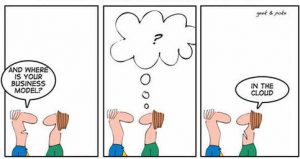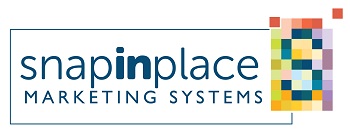Have the courage to say no. Have the courage to face the truth. Do the right thing because it is right. These are the magic keys to living your life with integrity.
— W. Clement Stone
 Fear. Fear is what keeps most technical organizations from embracing Software-as-a-Service (SaaS) for mission-critical operations.
Fear. Fear is what keeps most technical organizations from embracing Software-as-a-Service (SaaS) for mission-critical operations.
No system is up 100% of the time, but often your resident information technology (IT) manager will resist a Software-as-a-Service (SaaS) proposal out of fear that any downtime caused by the service provider wont be possible to fix by dispatching in-house staff to resolve it.
You may be an electrician. But when the lights go out in your neighborhood, you just can’t pay a visit to the power plant and get them back up yourself. You’re stuck, dependent, powerless along with everyone else. That’s how it’s like for internal IT resource facing a SaaS meltdown.
Whats All The Concern About?
Ive had to sit across the table from IT managers several times to discuss with them their psychological barriers to SaaS for marketing automation. There is no denying that their fears are legitimate. Those technicians willing to work with the marketing or sales client provide means for mitigating what amounts to high risk of system failure from their perspective.
They provide direction on how to run a security review of the SaaS operation to determine how confidential company data will be transmitted, how it will be stored and where, who will manage it and how, and in which form it will return home. These are neither minor nor inexpensive exercises. And they’re good “I told you so’s” from IT if the SaaS drops down from orbit.
One of the biggest concerns from in-house technical managers is whether the SaaS solution will be able to co-exist with other systems behind the client companys firewall. Cloud computing tends to isolate operations such as marketing automation and CRM from other mission-critical operations such as finance and customer support that more often than not run on systems installed inside the company.
These marketing and sales operations may seem self-sustaining until the time comes to validate them against data residing in internal systems. For example, it may be possible to capture and track a sales lead in a SaaS system and record the closure of the deal in that outsourced CRM system.
But to validate whether the client actually paid for that purchase and whether a profit was realized on that deal, the sales transaction will have to be mapped to a corresponding accounting record in the companys financials system. The actual estimate of customer lifetime value, for instance, wont be possible to produce without this cross-system integration.
How then could marketing accurately target its most valuable customers? How can sales account for accurate ROI from a profitability standpoint? This is why SaaS integration is a must.
This is also where the word complexity rears its ugly head in the world of so-called easy-to-use SaaS solutions.
In this sense, launching and maintaining a SaaS solution can be a rather resource intensive undertaking for the SaaS client, despite the claim of simplicity and low cost alternative.
Add to this the fact that SaaS providers are not meant to customize their applications’ configuration for you, yet running an operation from a one-size-fits-all or cookie-cutter approach will not guarantee you comparative advantage in your market space, and you can see how it might be possible for you to end up inside a SaaS straight jacket, if you dont watch yourself.
How To Address This SaaS Integration Concern
So you’re still determined to subscribe to a SaaS. OK. You need to deal with SaaS integration. So plan ahead. Mitigate your risk of data control and system integration, and your IT organization will be more supportive of SaaS. Do not allow the SaaS reps to direct the discussion when it comes to system integration.
 The SaaS integration topic will make them uncomfortable. It may even make you uneasy, if you’re seeking for plug-and-play simplicity.
The SaaS integration topic will make them uncomfortable. It may even make you uneasy, if you’re seeking for plug-and-play simplicity.
But better to have your SaaS sales rep hot under the collar before the deal is signed, than you sitting on the hot seat during system configuration and deployment, when sponsor and user expectations alike presume the availability of data from systems against which you’d need to integrate the SaaS and for which you have no idea how to accomplish that integration or how to keep it running.
What then should you ask yourself and the hosted application provider regarding SaaS integration?
First you need to know what your business process looks like and how the SaaS will replace part of it or enhance the rest. What will be the cost of making that change not merely in terms of money but in terms of user resistance to change, data quality control and new technology adoption? How will the business deal with system upgrades on the side of both the SaaS provider and the in-house operations the SaaS will depend upon?
Always keep time in mind when dealing with integration. How often do you wish to transmit data from one system to the next to support your operation? Also keep growth in mind, as your business needs will change and often expectations will rise about what the system was initially expected to deliver while patience for such deliverables wont match what it might take to turn those around and hand them over to users.
Lastly, ensure you have your IT teams involvement from beginning to end in evaluating the entire plan of execution for your SaaS of choice. It will ensure compliance to data security requirements, system integrity and reliability, as your IT organization can help you wade through the necessary topics about how to set up service level agreements (SLA) not only between your SaaS and your company but between you and the owners of the internal systems that will make it feasible for your operation to be sustainable and scalable moving forward.
SaaS solutions may be attractive because of their pay-as-you-go pricing schemes, their constant service innovation, the high probability for fast deployments, and the sense of empowerment that comes from being able to circumvent your in-house IT colleagues. But you can’t have your cake and eat it too. With that empowerment comes risk. SaaS integration is one of the biggest risks you will confront early on.
My suggestion: Don’t face it alone. Use IT for what they’re good at. And evaluating how a new system is to connect to the systems that they already manage, whether it’s SaaS integration or not, is one of those strengths. Now, have the courage to face the truth, and go do the right thing.
